Arctic Centre researcher Ilona Mettiäinen followed the COP21 climate negotiations in Paris and participated the #ArcticLessons side event on Arctic climate change by five Nordic universities as one of the five presenters and panelists.
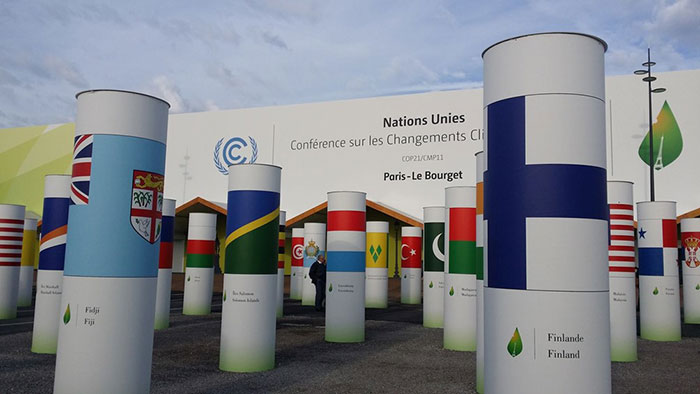
The COP21 climate negotiations in Paris lasted for two weeks from 30 November to 12 December, and resulted, as we now know, as a legally binding and universal agreement between 195 countries to tackle climate change. The common goal is now to keep global warming “well below 2 °C above pre-industrial levels and to pursue efforts to limit the temperature increase to 1.5 °C above pre-industrial levels”.
The climate conference attracted nearly 50,000 participants including 25,000 official delegates representing governments, intergovernmental organizations, UN agencies, NGOs and civil society.
I was one of those that had the wonderful opportunity to participate the Paris climate talks at Le Bourget with an observer badge.
First and foremost I participated a Nordic side event on Arctic climate change on Saturday 5 December as one of the five speakers and panelists.
The purpose of the #ArcticLessons side event was to contribute to decision making for climate change in the Arctic region and to contribute to global climate diplomacy, regulation, mitigation and adaptation through Arctic science, especially from the social sciences perspectives.
The side event was hosted by the Rector of the Arctic University of Norway, Tromsø, Anne Husebekk and moderated by professor Rasmus Gjedssø Bertelsen also from the Arctic University of Norway. The speakers represented central Nordic universities for creating knowledge about the Nordic Arctic and the Circumpolar Arctic regions. Moreover, the President of the Saami Council in Norway, Ms. Aili Keskitalo, gave her invited comments to the presentations.
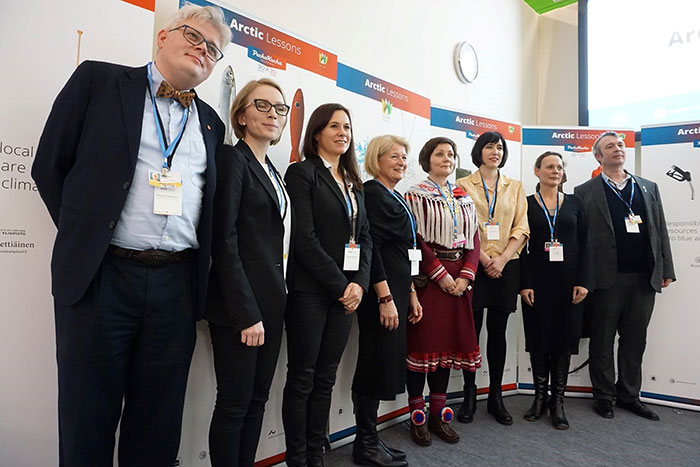
Photo: Asbjørn Bartnes, UiT
Brynhildur Davidsdóttir from the University of Iceland stated that responsible development of resources in the Arctic is key to blue and green growth. Blue growth refers to marine and freshwater based resources. Berit Kristoffersen from UiT the Arctic University of Norway concluded that Arctic states cannot exploit all new economic opportunities opening as the Arctic sea ice melts. Cécile Pelaudeix from the Aarhus University, Denmark suggested inclusive management and trust-based contracts in governance of fossil fuels in the Arctic.
Especially Peter Sköld from the University of Umeå, Sweden and I emphasized that climate change in the Arctic is not only about glaciers, melting sea ice and polar bears but that there are also people and communities there that are affected. Peter Sköld discussed climate change as a serious challenge to reindeer herding, Sami culture and Sami health. My lesson was that regional and local level climate strategies are crucial for adaptation to climate change in the Arctic. There is no “one size fits all” in climate adaptation, “We are a climate aware region” is not yet a climate strategy, and local and regional actors should be welcomed to join the regional or local climate strategy work from the very beginning.
In the climate talks that mostly focused on mitigating climate change and on finding global level solutions in the form of the global climate agreement, it was important to point out also the importance of local and regional level initiatives in climate adaptation.
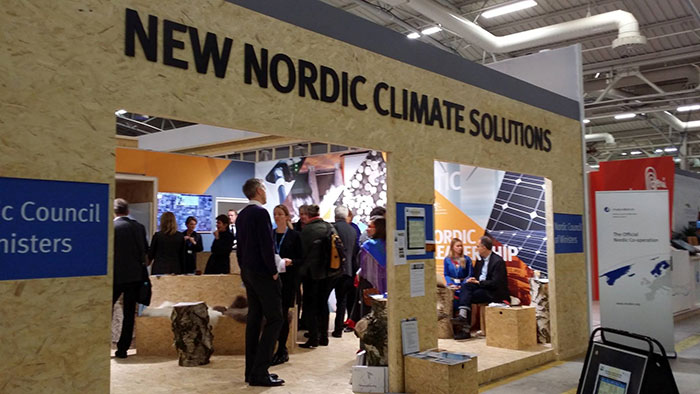
All the practical arrangements at Le Bourget worked really well and the atmosphere was most enthusiastic and optimistic. An impressive variety of NGOs, countries, international organizations and research institutes displayed their climate expertise and views. Also interesting technological solutions were presented. The security arrangements of the climate conference were on top level due to the high level of the participants of the climate talks and for the terrorist attacks that had taken place in Paris just a couple of weeks earlier. Everything felt safe at all times at the conference venue, but apparently some climate demonstrations downtown had been cancelled due to safety concerns.
The COP21 climate meeting was designed to be environmentally friendly, as fits well to the purpose of the event. This was seen both in the venue as wooden structures of the Observer rooms and conference stands as well as in the conference materials. As little was printed as possible, and there were strict limits to the number of printed materials to be handed out. I believe that the participants were impressed by the handy plastic bottles of French design that could be filled for free with cold tap water that was available everywhere in the conference site. Also the conference bags were made of recycled material. The participants were also offered lifts by electric cars, in addition to free access to local transportation in Paris.
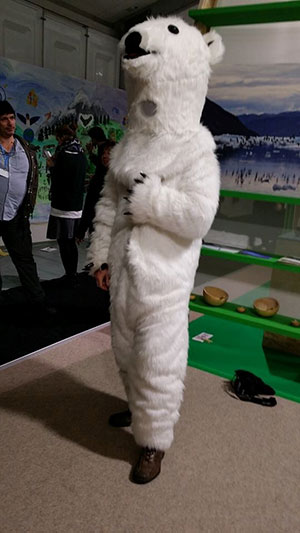
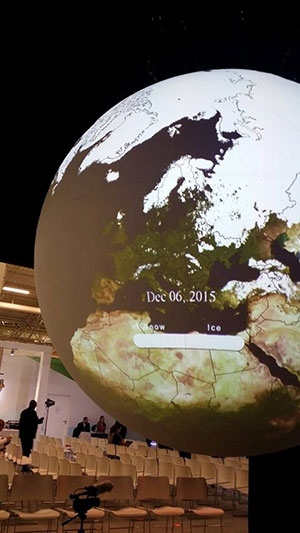
Text and photos (all except one by Asbjørn Bartnes, UiT): Ilona Mettiäinen
More information:
Twitter: #ArcticLessons
IISD video: http://www.iisd.ca/videos/climate/unfccc-cop21/arctic-lessons/